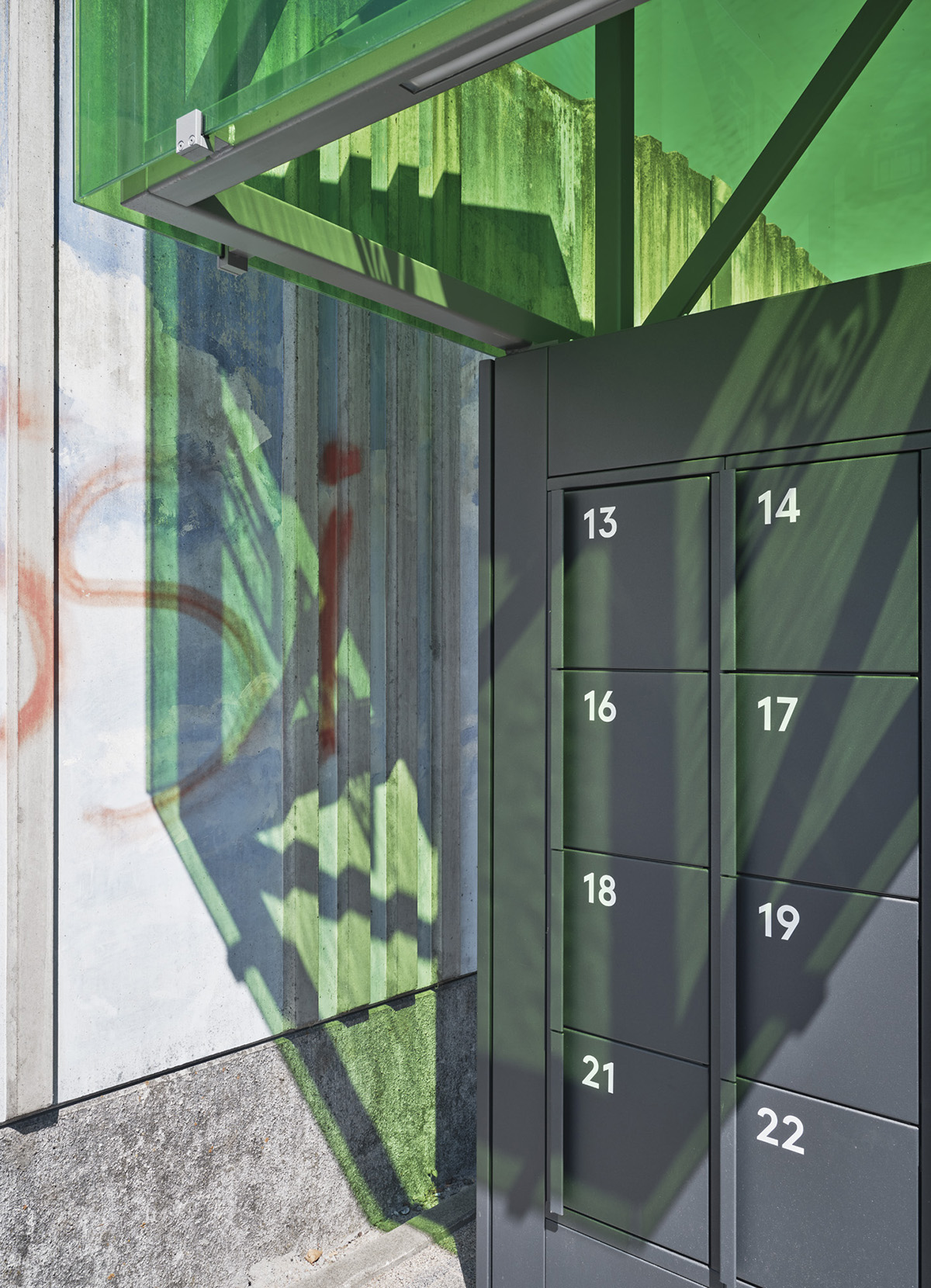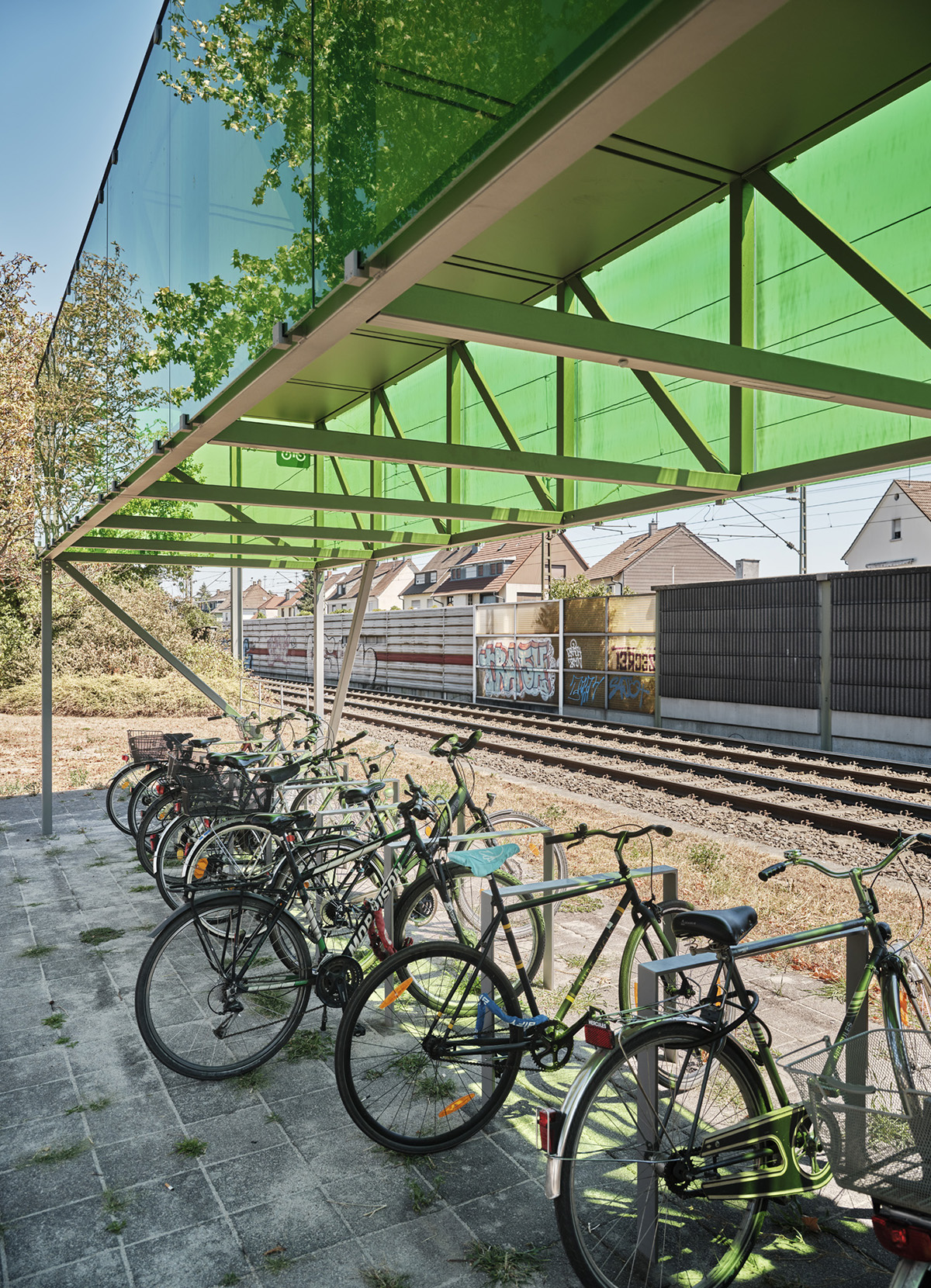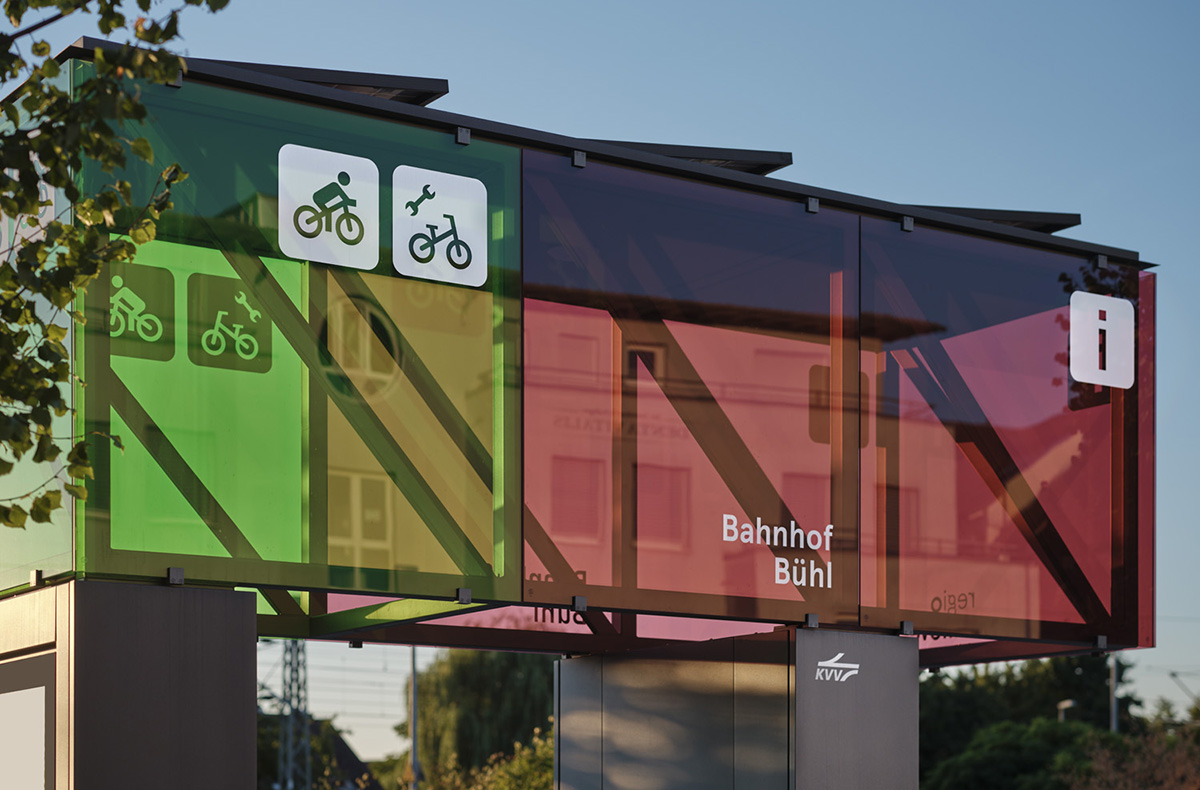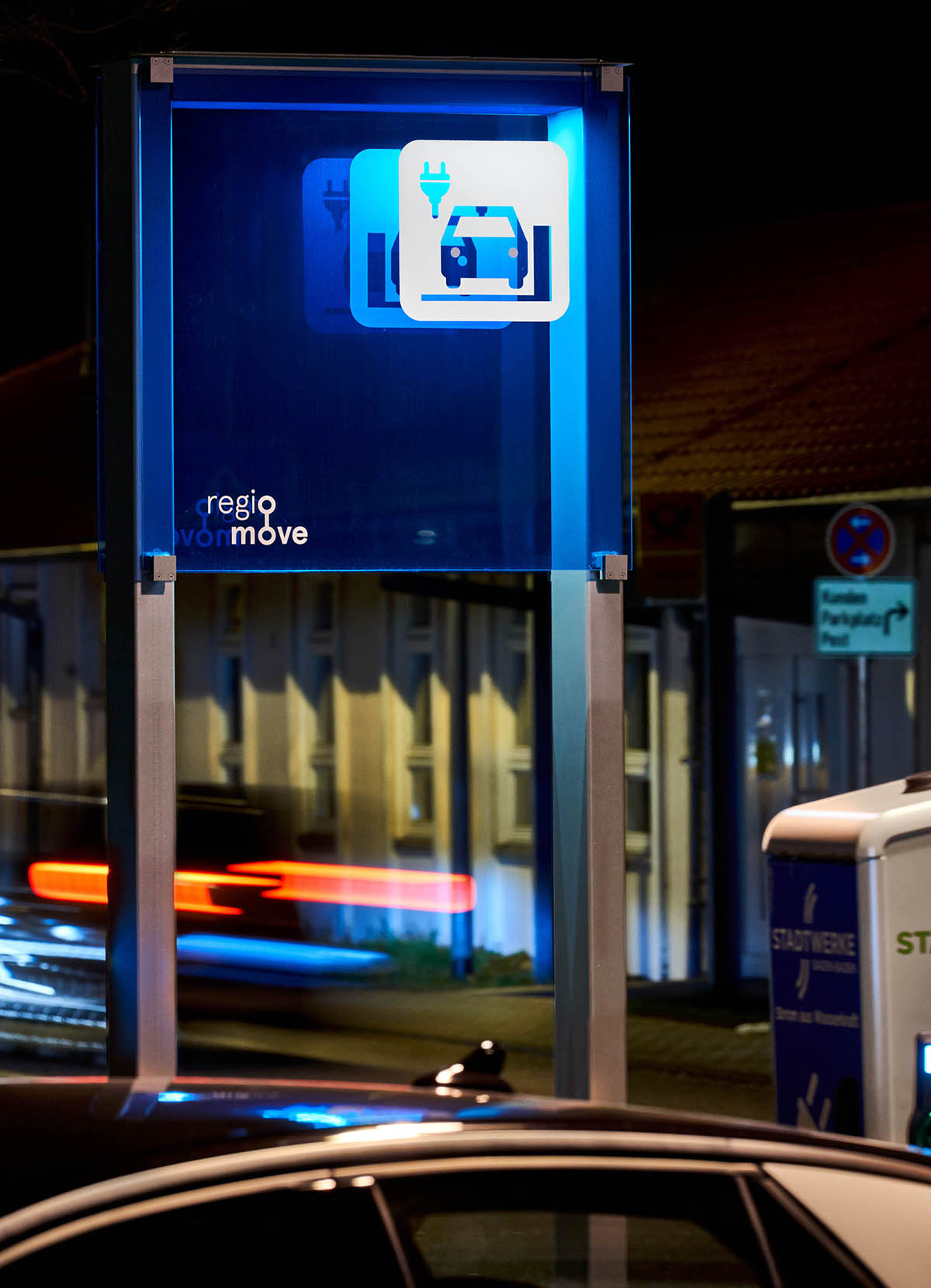task:
Development of modular mobility stations in the Middle Upper Rhine Region
client:
KVV Karlsruhe Transport Association
procedure type:
invited competition 2019, 1st prize
colaboration:
netzwerkarchitekten and unit-design
size:
3,24 sqm - ∞
completion:
2022
technical planner:
Dr. Kreutz und Partner (structural engineering) | ENVUE HOMBURG LICHT (lightning design) |
app and digital concept:
raumobil, Karlsruhe
visualization:
netzwerkarchitekten, Darmstadt | unit-design, Frankfurt |
photos:
Norbert Miguletz, Oberursel
Travelling a route intermodally or multimodally – i.e. combining different means of transport – creates a real alternative to the private car and has the potential to permanently change our mobility behaviour. regiomove wants to be part of this mission and for the first time digitally and analogue connects the entire Middle Upper Rhine region, especially in rural areas.
All mobility providers (both public, such as buses and trains, and private, such as sharing services, taxis, shuttles) will be networked in real time on a digital platform. Users only need one account to book and pay for all mobility services. The app suggests combined, intermodal routes with different means of transport – the physical networking of the offers takes place at the mobility stations, the so-called ports. They expand the possibilities of existing offers and stations.
Here, the different forms of mobility, which can vary depending on the location, are linked together. Passengers can thus easily choose and change different means of transport. In addition, the mobility stations include further uses, such as service offers for bicycles, rental bicycles, bicycle repair stations, car sharing stations, waiting shelters, lockers, among others.
The design of the ports, which consists of cubes of different colours lined up next to each other, allows for different module configurations. The design and construction principle of the modules was developed with the aim of achieving the greatest possible flexibility and functionality. Due to the simple construction of the modules, a wide variety of configurations can be made possible, from small to comprehensively equipped modules, which can be optimally adapted to the respective spatial situations and also have a space-creating effect.
The different types of services are identified by defined colours and further differentiating pictograms – both on site at the ports and in the digital services, such as the app. This uniform design and recurring, visible signs give users confidence in their use, strengthen acceptance and ensure safe orientation in the spatial context.
Ports with the associated orientation and information elements are both multimodal hubs and municipal landmarks that, with their high recognition value, draw people’s attention to the possibilities of the transport turnaround and symbolise the networking of mobility offers in the region.
Travelling a route intermodally or multimodally – i.e. combining different means of transport – creates a real alternative to the private car and has the potential to permanently change our mobility behaviour. regiomove wants to be part of this mission and for the first time digitally and analogue connects the entire Middle Upper Rhine region, especially in rural areas.
All mobility providers (both public, such as buses and trains, and private, such as sharing services, taxis, shuttles) will be networked in real time on a digital platform. Users only need one account to book and pay for all mobility services. The app suggests combined, intermodal routes with different means of transport – the physical networking of the offers takes place at the mobility stations, the so-called ports. They expand the possibilities of existing offers and stations.
Here, the different forms of mobility, which can vary depending on the location, are linked together. Passengers can thus easily choose and change different means of transport. In addition, the mobility stations include further uses, such as service offers for bicycles, rental bicycles, bicycle repair stations, car sharing stations, waiting shelters, lockers, among others.
The design of the ports, which consists of cubes of different colours lined up next to each other, allows for different module configurations. The design and construction principle of the modules was developed with the aim of achieving the greatest possible flexibility and functionality. Due to the simple construction of the modules, a wide variety of configurations can be made possible, from small to comprehensively equipped modules, which can be optimally adapted to the respective spatial situations and also have a space-creating effect.
The different types of services are identified by defined colours and further differentiating pictograms – both on site at the ports and in the digital services, such as the app. This uniform design and recurring, visible signs give users confidence in their use, strengthen acceptance and ensure safe orientation in the spatial context.
Ports with the associated orientation and information elements are both multimodal hubs and municipal landmarks that, with their high recognition value, draw people’s attention to the possibilities of the transport turnaround and symbolise the networking of mobility offers in the region.























